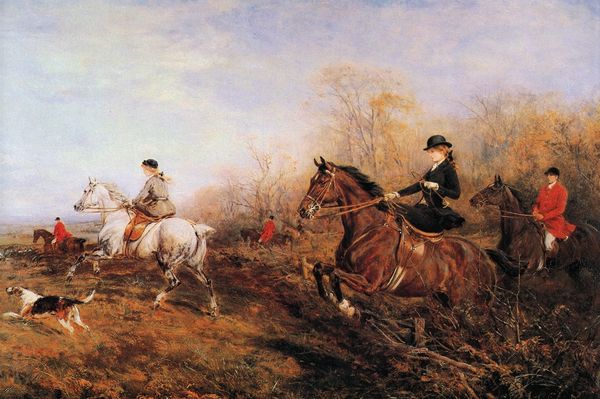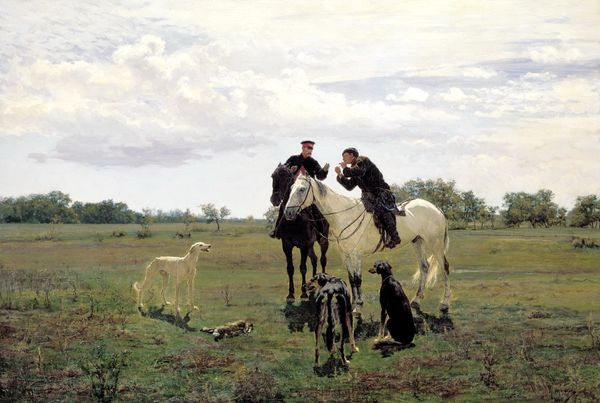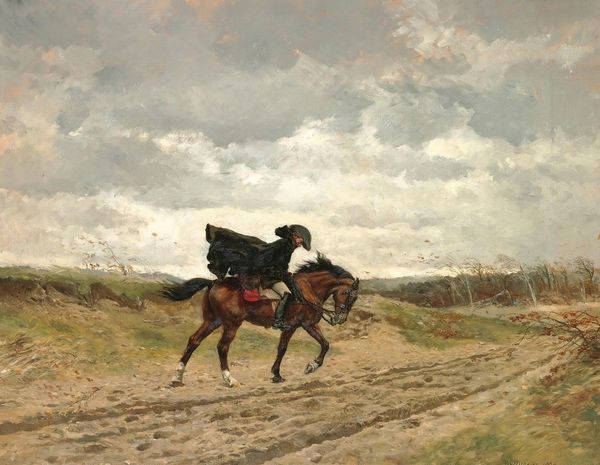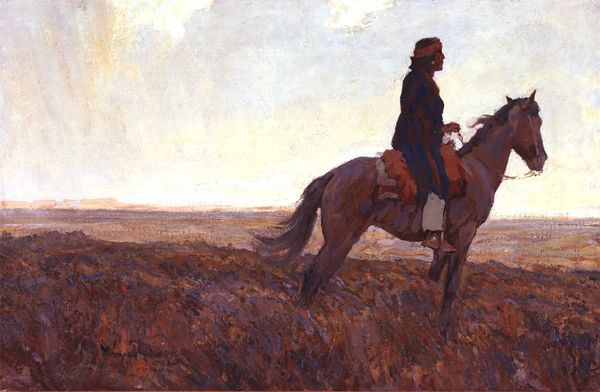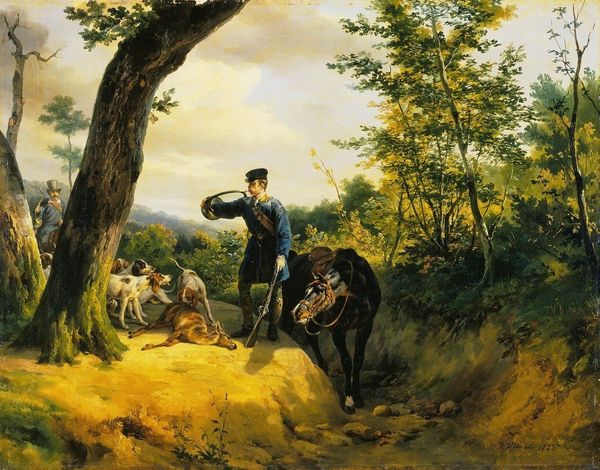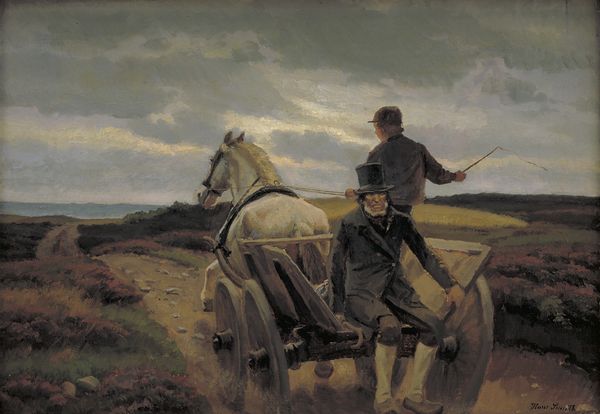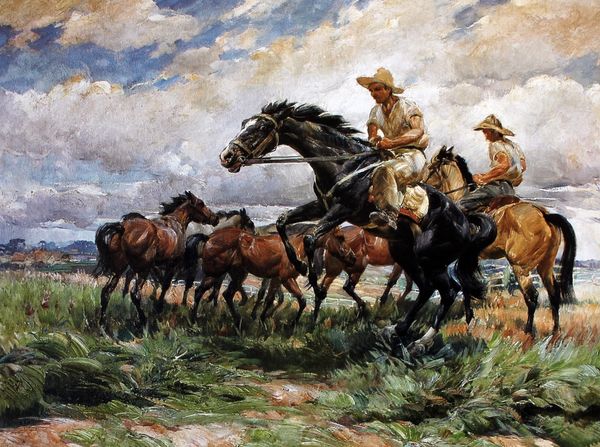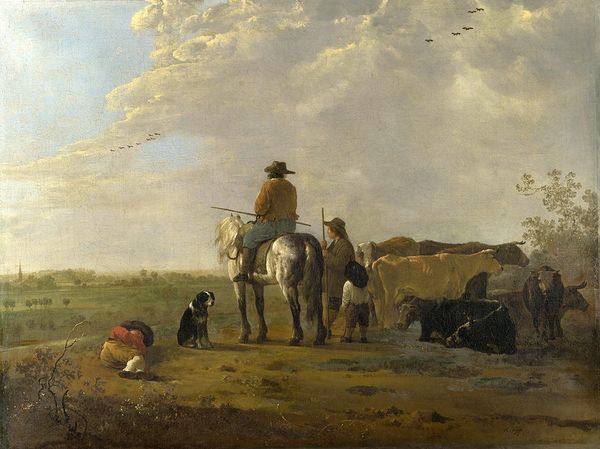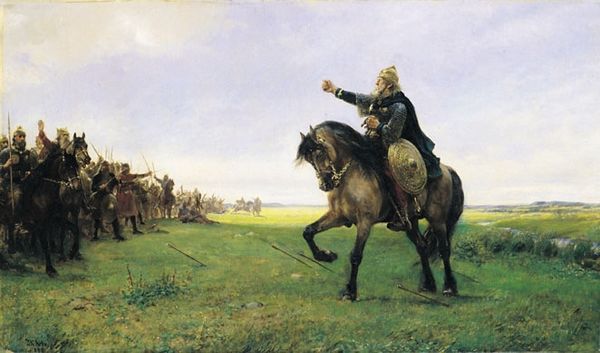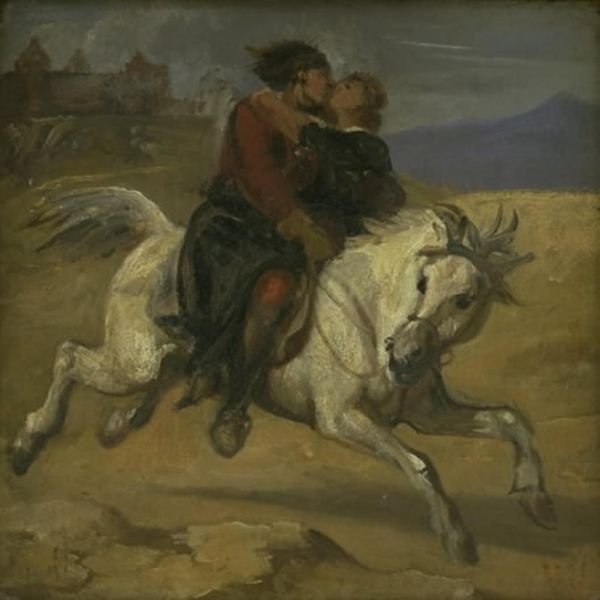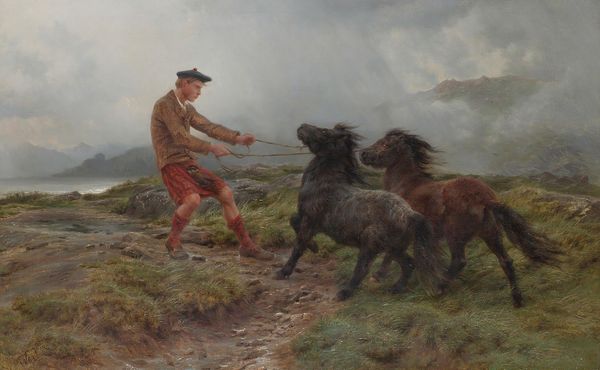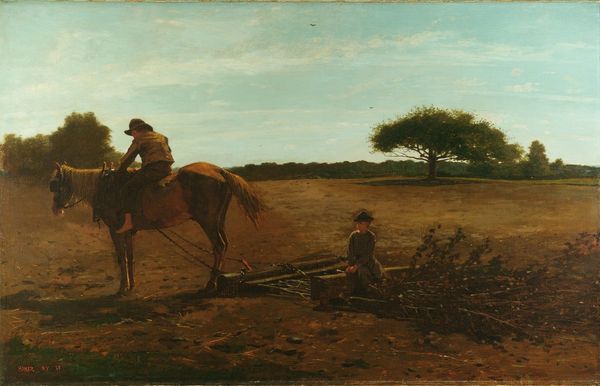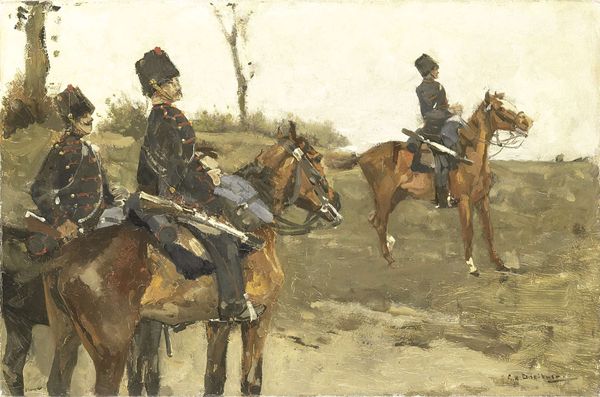
Copyright: Public domain
Editor: This is “Duty,” an oil painting by Heywood Hardy, dating back to 1880. It’s rather bleak; you’ve got these windswept figures against a muted landscape. I’m curious, what do you make of the title in relation to what’s depicted? Curator: Consider the materiality itself, the oil paint meticulously applied to render this scene. Look at the visible brushstrokes depicting the rough textures of the landscape and the garments worn by the figures. Notice how these crafted surfaces themselves embody labour, perhaps mirroring the dutiful toil suggested by the title. How do the details of the brushwork guide your interpretation? Editor: I see what you mean! It’s not just an image *of* duty, but it almost feels like duty is embodied in the work. How the work itself was probably painstaking... Curator: Exactly! And this leads to considering Hardy’s role in perpetuating particular class narratives. Who is represented and how? Focus on how the landscape and figures are represented and how the medium itself contributes to conveying such meanings. How might we see this through the lens of 19th-century labour and its social hierarchies? Editor: So, you're saying that the materials, and the act of creation are as important to understanding it, as the symbolism and narrative? Curator: Precisely. This Romantic idealization, rendered through skilled manipulation of materials, naturalizes a very particular relationship to labour. What happens if we begin to question the value judgments inherent in this kind of romantic portrayal? Editor: I never really thought about how much the making of something contributes to its meaning. This changes everything! Curator: Indeed, looking closely at the materials and modes of production invites us to interrogate not only the “what” but also the “how” and “why” of artistic representation.
Comments
No comments
Be the first to comment and join the conversation on the ultimate creative platform.
